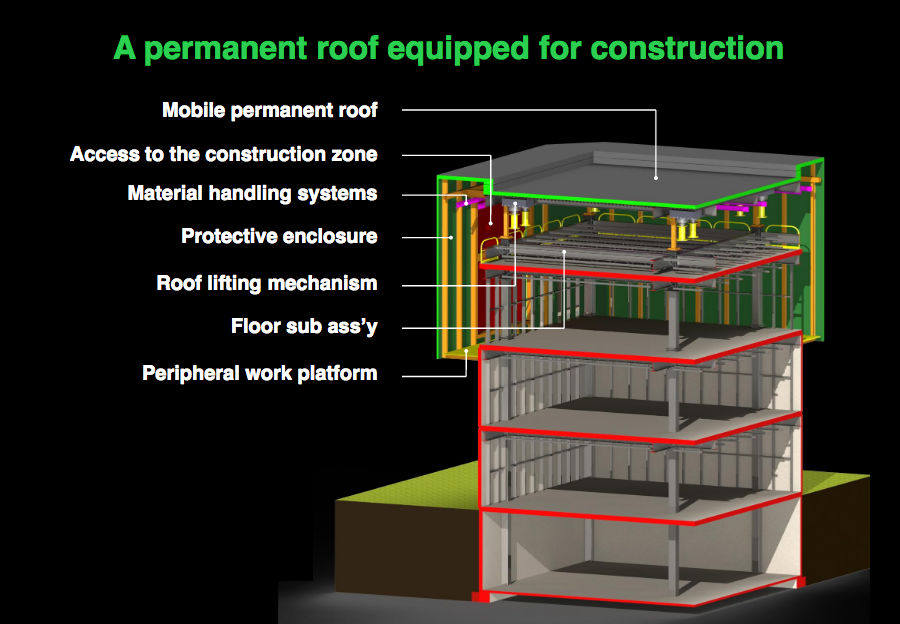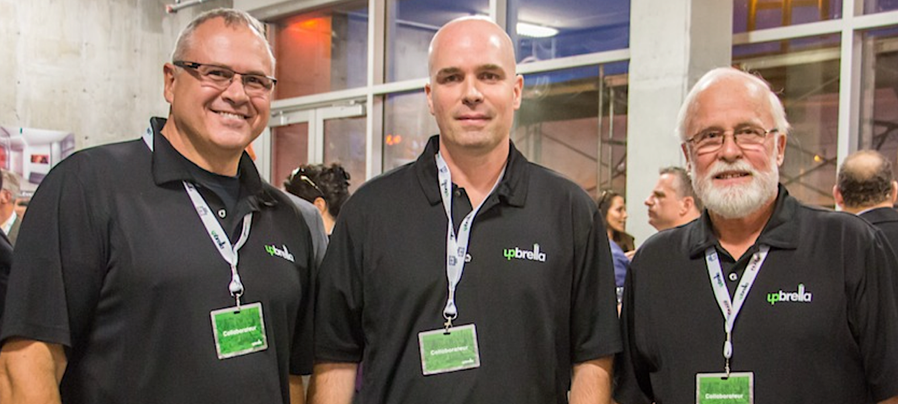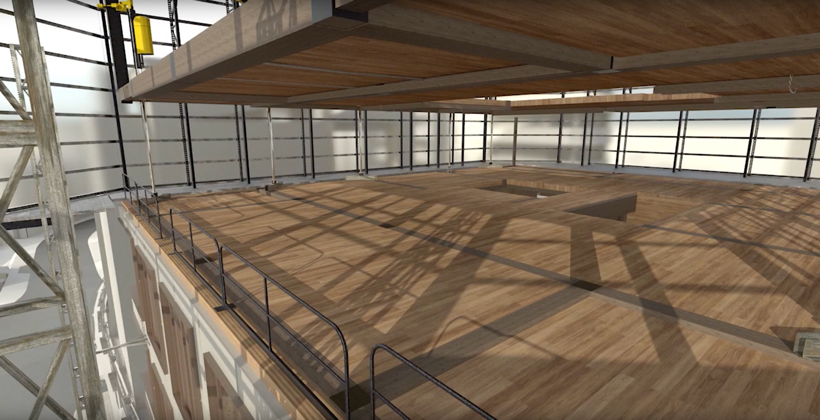Villa Carmelha © Edm
The construction industry is an important sector that has driven economic growth worldwide. However, it is not immune to difficulties, and recently the industry has faced a number of unprecedented challenges that have impacted contractors, construction project managers and the construction sector as a whole. From supply chain disruptions to productivity levels, labour shortages and rising material costs, to significant amounts of construction waste, low profit margins and frequent project delays…the challenges in the construction industry today are many and complex.
One effective approach to addressing these challenges facing is, of course, to introduce innovative technologies. Canadian company 3L-Innogénie, headquartered in Quebec has done precisely that. It has launched the UPBRELLA system on the world market, a revolutionary construction concept, particularly in terms of the process of raising the building, which is carried out without the use of cranes.

The patented UPBRELLA principle revolutionises the building process by starting with the roof. It uses an umbrella-like structure that is initially erected at ground level and then gradually raised as the building project progresses.
The process begins with the construction of a stable foundation and the installation of a circular base structure which serves as a support for the umbrella structure. The umbrella, in turn, consists of a central core and a series of radial arms that extend outwards. These arms are equipped with hydraulic cylinders that allow the structure to be raised and lowered in a controlled manner.
As construction progresses, the canopy is gradually raised to create a covered work area underneath. This sheltered area allows workers to continue with construction work, such as pouring concrete, installing building systems and finishing interior spaces, regardless of weather conditions.
UPBRELLA technology offers several advantages. First, it reduces the impact of weather-related delays on construction schedules by allowing work to continue even in bad weather. Second, it improves worker safety by providing a controlled and protected environment. It can also increase productivity by eliminating the need for temporary weather protection structures and minimising downtime. Once the roof is raised, the exterior walls are closed off in order to enclose the storey. The interior walls are then erected until the floor is complete so that tenants can move into the finished space immediately. The roof is then raised one level and the process is repeated for the next floor.

In addition, UPBRELLA construction can be adapted to different building types and sizes, such as high-rise buildings, commercial buildings and residential complexes. It offers flexibility and can be adapted according to specific project requirements. What’s more, the progressive nature of the UPBRELLA construction process also allows developers and builders to consider financing and selling incrementally, providing a simpler and less risky approach to urban development.
Gilles Larouche, together with his son Joey and his nephew Justin, are the driving forces behind this project. Innogénie arose from the fusion between innovation and génie (French for engineering). The 3L team consists not only of management and engineering experts, but also of specialists in innovation and product development. 3L has devised its own product development process to ensure maximum success in the development and marketing of innovative work, while giving free rein to the creativity required for technological revolutions.
| A delicate balancing act
The government of Monaco has long faced a double challenge: that of addressing the housing shortage in the Principality while at the same time taking into account the climate and environmental problems that characterise today’s world.
The relationship between the housing sector and environmental quality is complicated and reciprocal. Housing activities have significant impacts on the environment, including land and materials use, energy consumption and transport. To mitigate these impacts, environmentally oriented policies aim to include environmental costs in housing prices. However, these measures often lead to affordability problems. Furthermore, housing policy itself can influence the environmental footprint of housing development.
The interaction between environmental policies and the housing market, as well as their impact, depends on the specific policies and the characteristics of the urban areas in which they are implemented. Achieving sustainability in the housing market requires a comprehensive approach that considers both housing affordability and the environmental and economic impacts of policies to promote social well-being.

| A ‘world first’ in Monaco
As an important component of the National Housing Plan for Monegasques, the planned Villa Carmelha situated on the Boulevard d’Italie in the eastern part of Monaco, embodies this comprehensive approach. The project is led by Maud Le Strat, director of operations of the Public Works Department, who also serves as project manager on this ambitious and groundbreaking project, comprising ten storeys and 25 state-owned apartments.
The building, which is scheduled for delivery in early 2024, is a truly innovative project from an ecological point of view, in which environmentally friendly requirements were already implemented in the design phase.
Innovation is the key word here, because a lot of wood was used for the structure, including for the lift shafts and the central staircase. Only the partially underground part of the structure facing the Boulevard d’Italie is made of concrete. Regarding fire safety, all the necessary precautions have been taken and furthermore, the construction teams have been working on a bioclimatic design that will limit the energy consumption of the completed structure.

To achieve these goals and to provide a building with the lowest possible energy consumption, several solutions have been found. Some of these are already being used elsewhere, such as the installation of photovoltaic and thermal solar panels on the roof to heat water and provide 25% of the building’s electricity needs, and the use of seawater heat pump systems. And there are other solutions which represent significant innovations.
Among these is the fuel cell or “Smart Energy Hub”. This innovative system is able to store surplus electricity generated by solar panels. “When we have a surplus of electricity from the photovoltaic panels on the roof, which can happen during the day and in the summer, this surplus can be stored in the form of hydrogen,” explains Maud Le Strat. The hydrogen can then be converted again to generate electricity when it’s needed. It’s like a big battery”.
For this electricity generating plant which is financed by the Principality’s “Green Fund”, increased maintenance is planned for two years after final acceptance, including training for local maintenance companies.
This is the first time that this system has been applied in the Principality. If the evaluation is positive after the completion of the construction work, the Public Works Department does not rule out using this system in future projects. At this stage, it seems that this system is suitable for extensive building extensions.
And to further minimise the impact of construction on local residents and reduce noise pollution, technical teams at Villa Carmelha are also resorting to off-site prefabrication; the building parts are prefabricated in advance and assembled on site.
In addition, the wooden construction requires less water compared to concrete, which further reduces the environmental impact.
| Future sustainability

To ensure the long-term viability of the project, the Monegasque government has integrated the concept of a circular economy through the service provider “Cycle Up”. Demolition waste is largely considered as worthless, and the aim of the circular economy is to find buyers or reuse the waste in the same project or in neighbouring projects.
As for future tenants, they will all receive a booklet, included with the lease, containing recommendations for implementing eco-responsible practices in their homes, such as the sorting of waste and temperature management. They will even have the option to choose an “absence” scenario, which will automatically limit energy consumption when they are not at home.
The Monegasque government will provide support during the first two years following delivery, including the BD2M process and commissioning to verify the performance of the technical installations and the building’s energy consumption.
Through innovative approaches such as bioclimatic design, renewable energy integration, and circular economy principles, the Principality is actively demonstrating its commitment to reducing its ecological footprint. These efforts not only contribute to the preservation of the environment but also enhance the well-being and quality of life for its residents. By setting an example for sustainable construction practices, Monaco continues to pave the way towards a greener and more resilient future.

